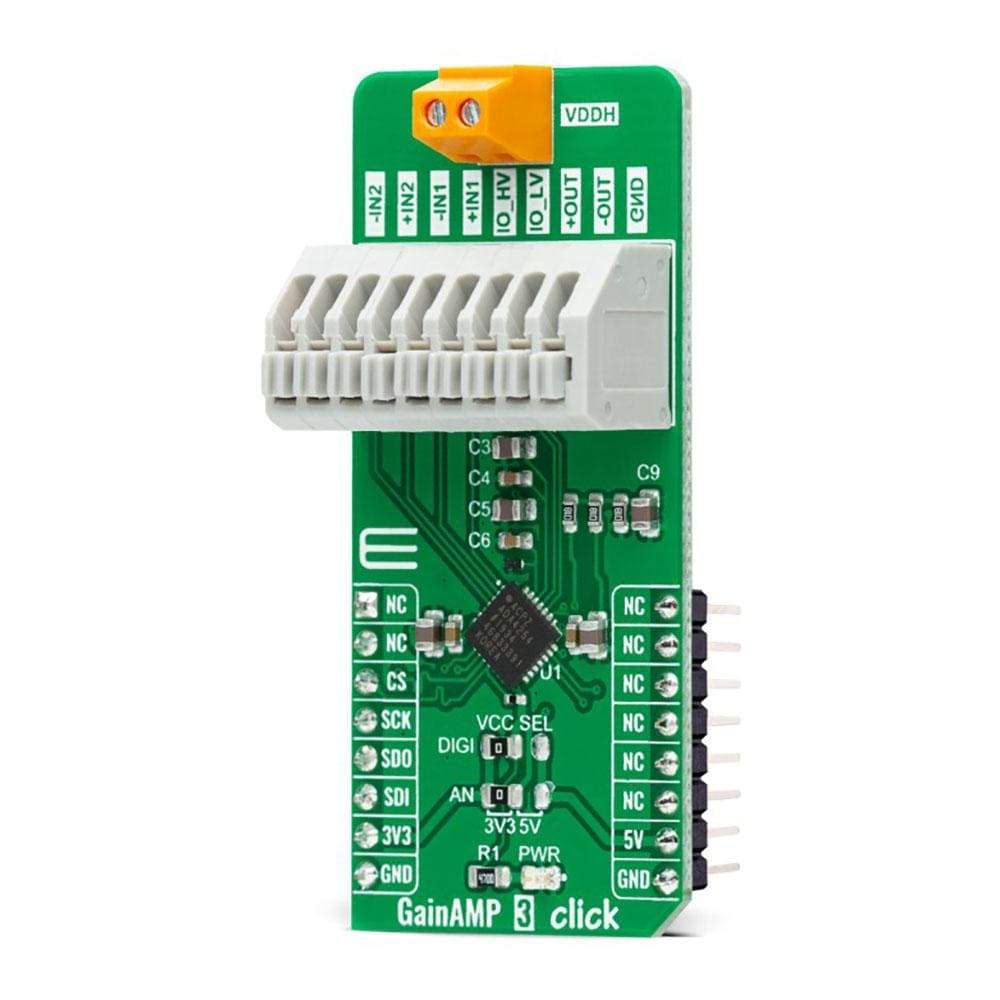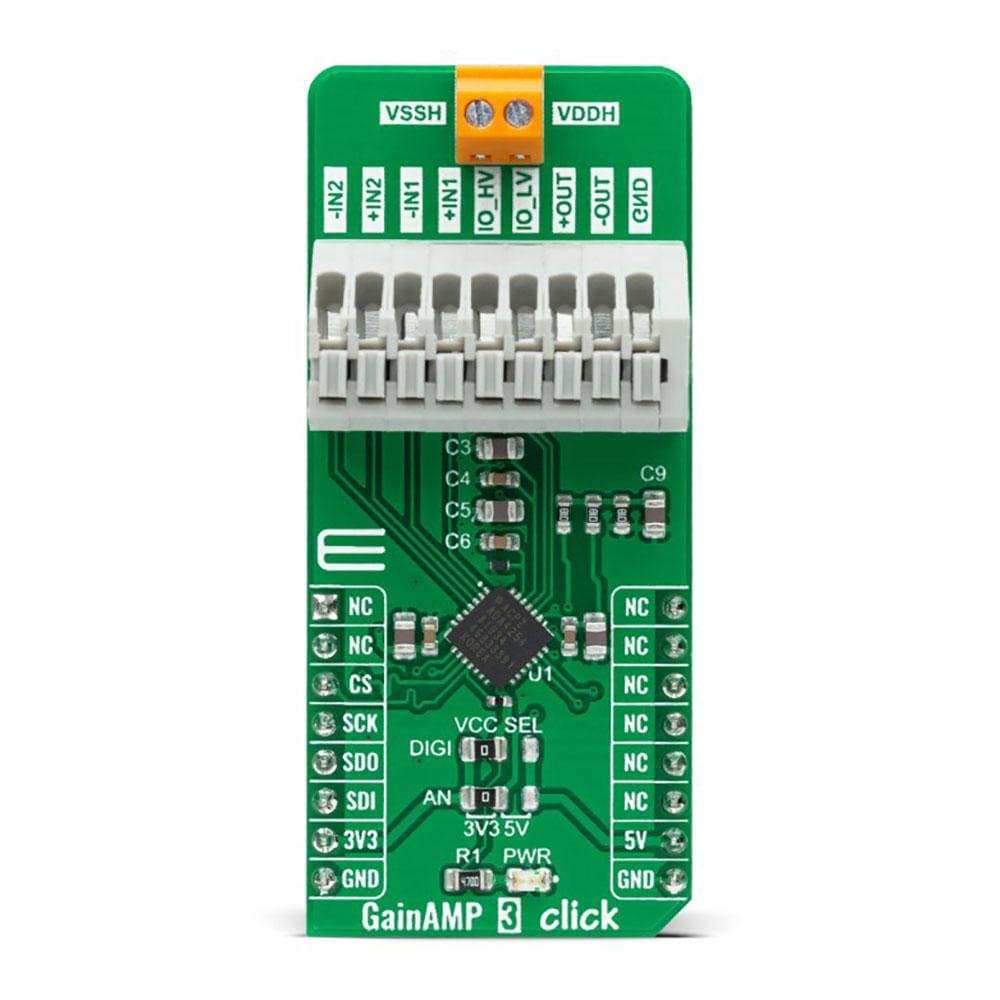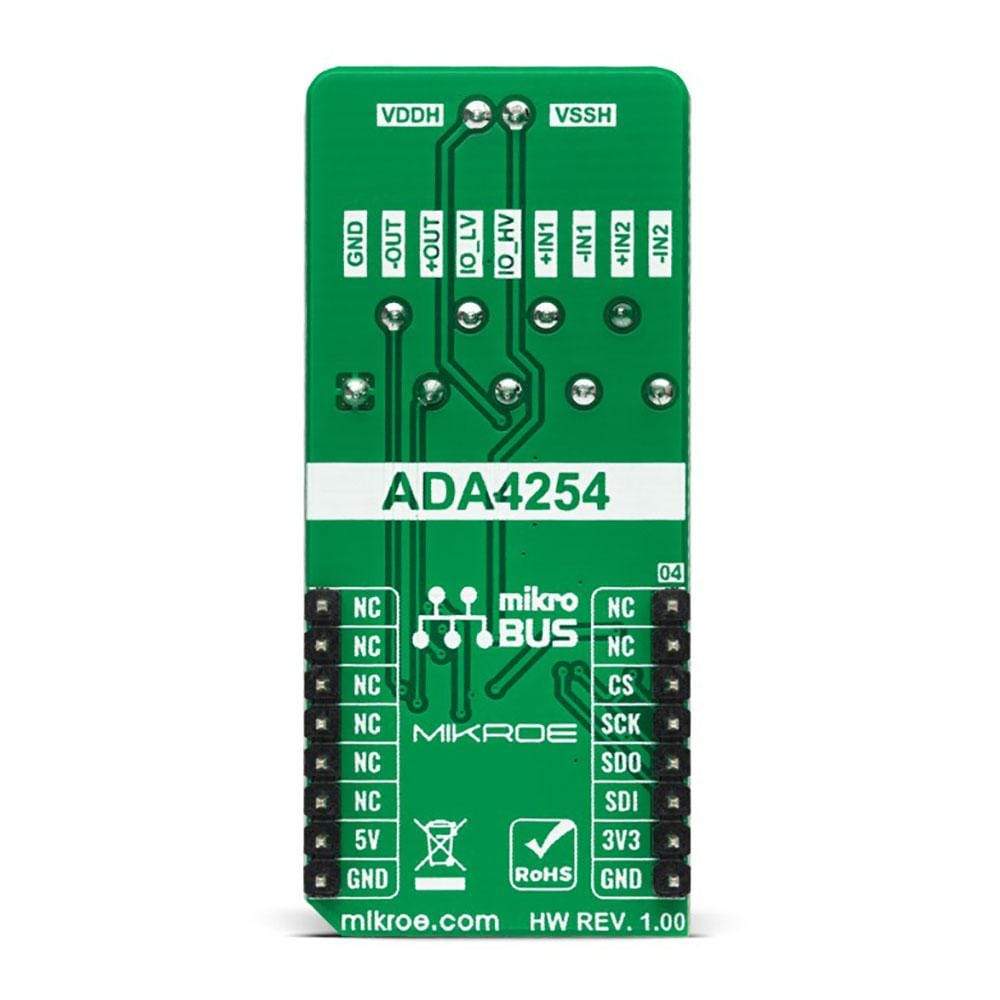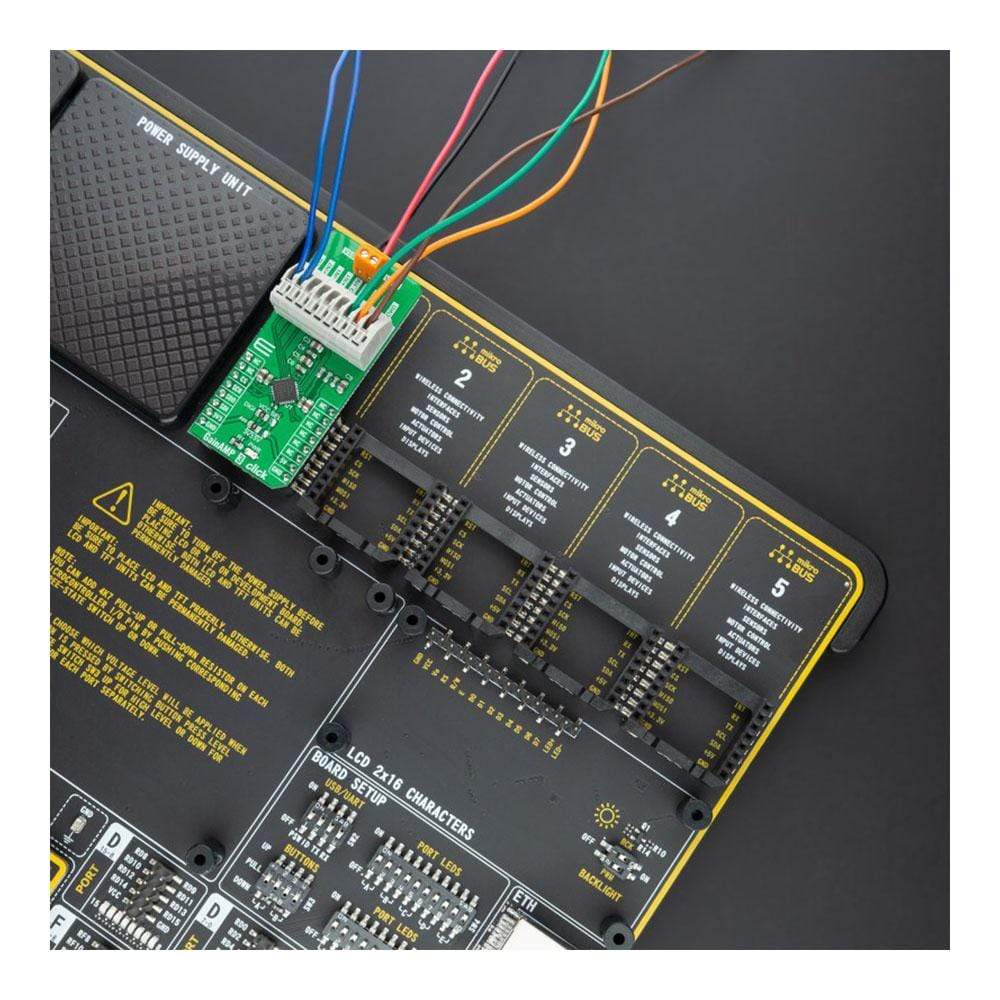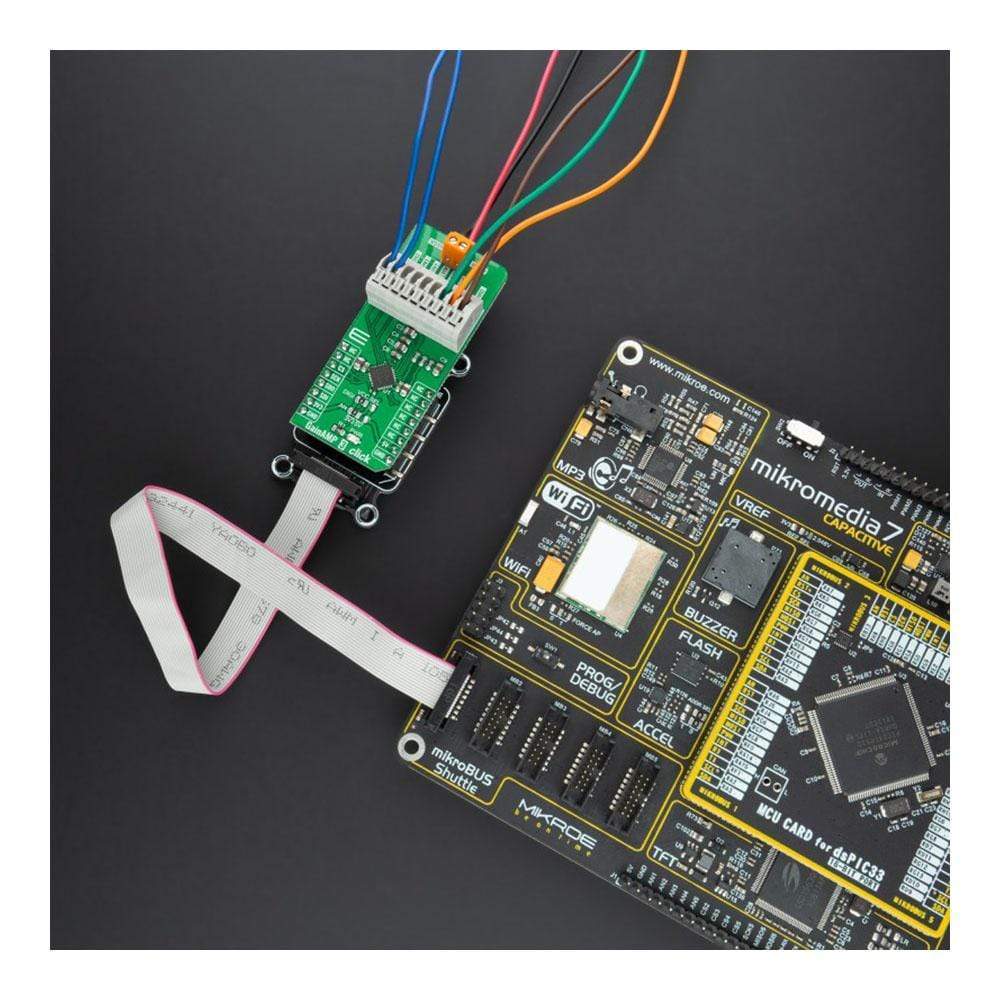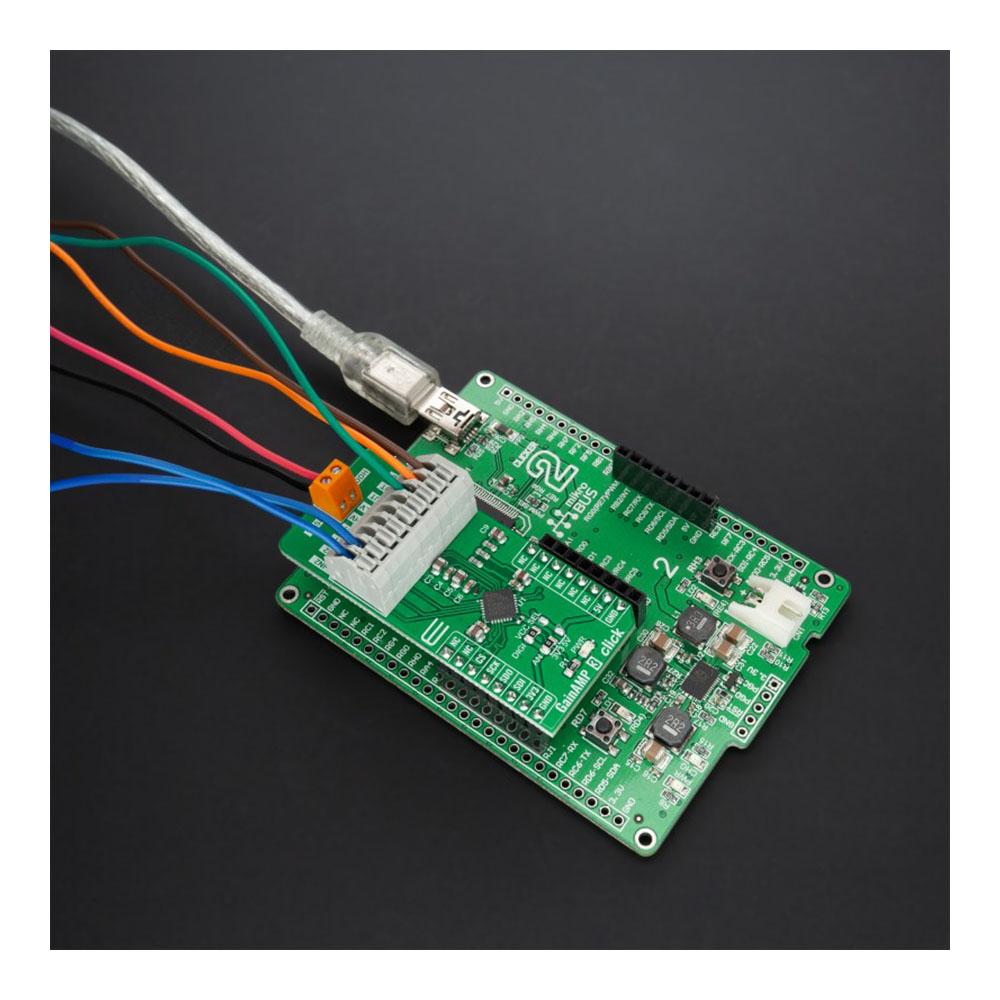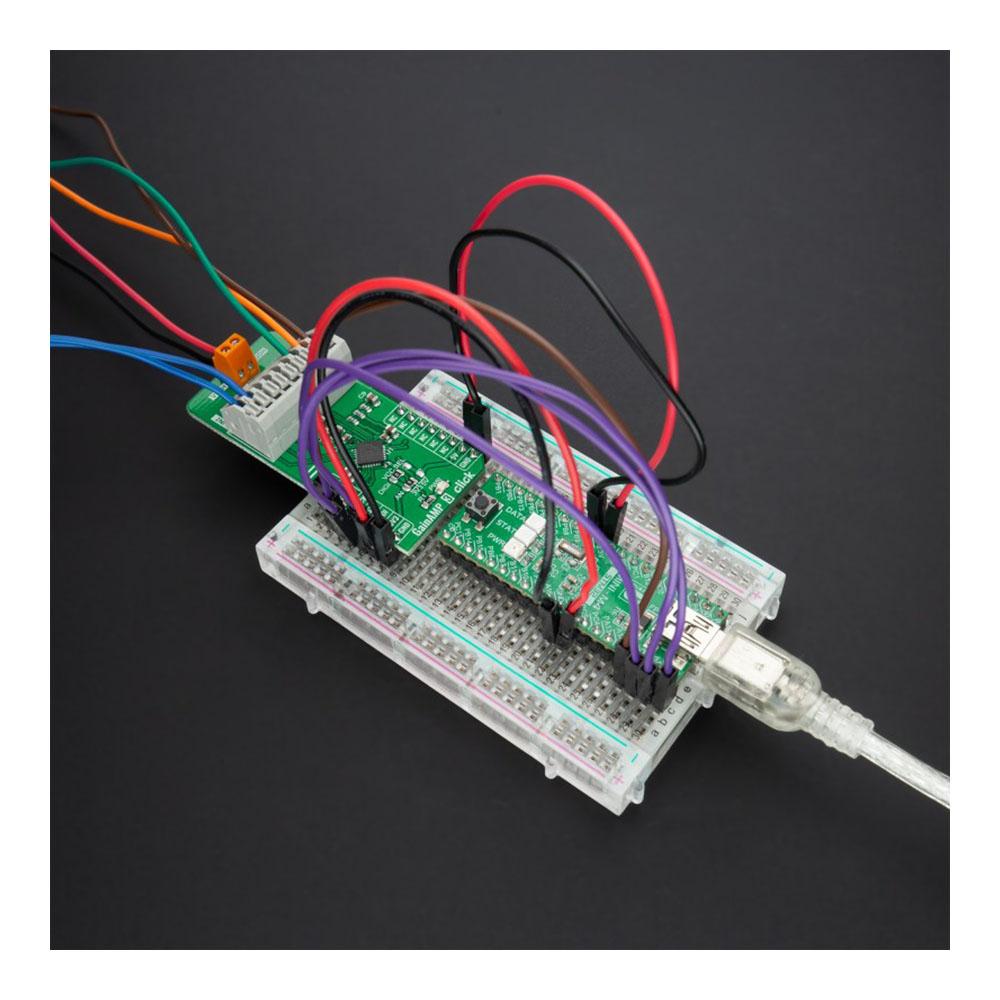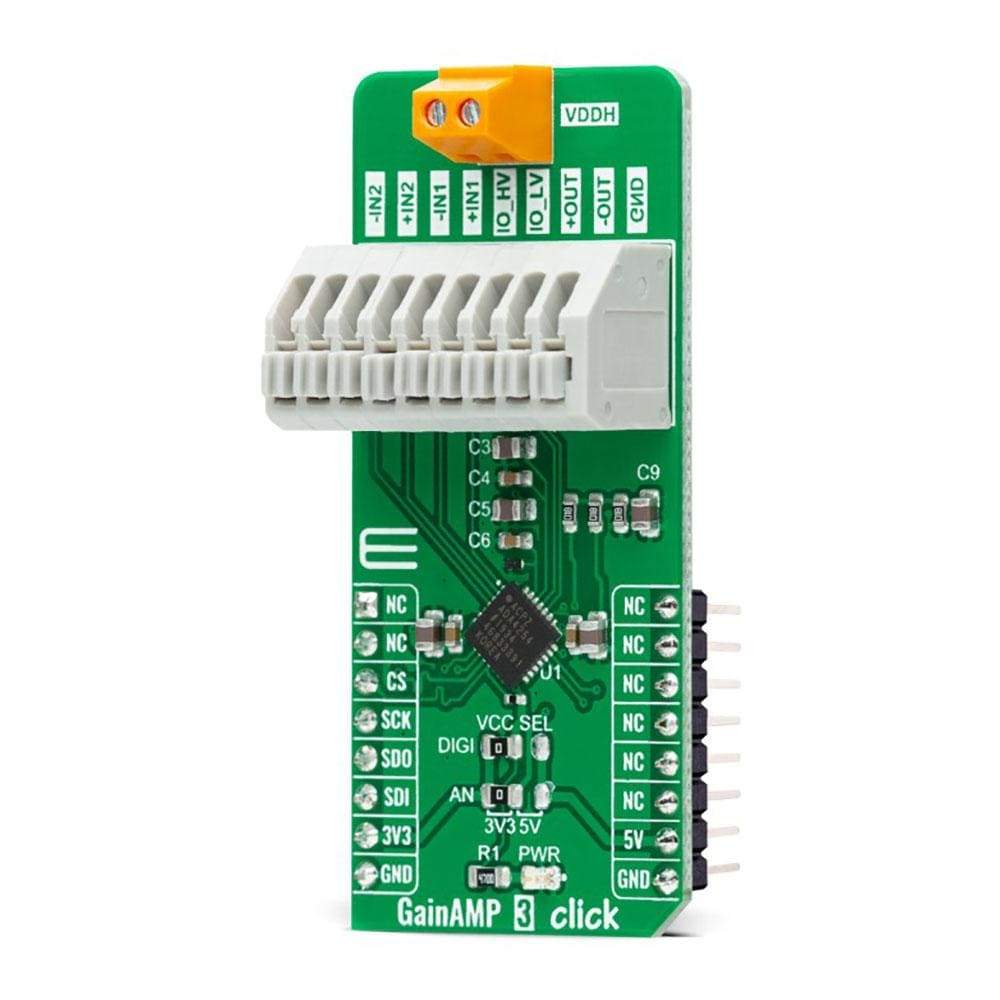
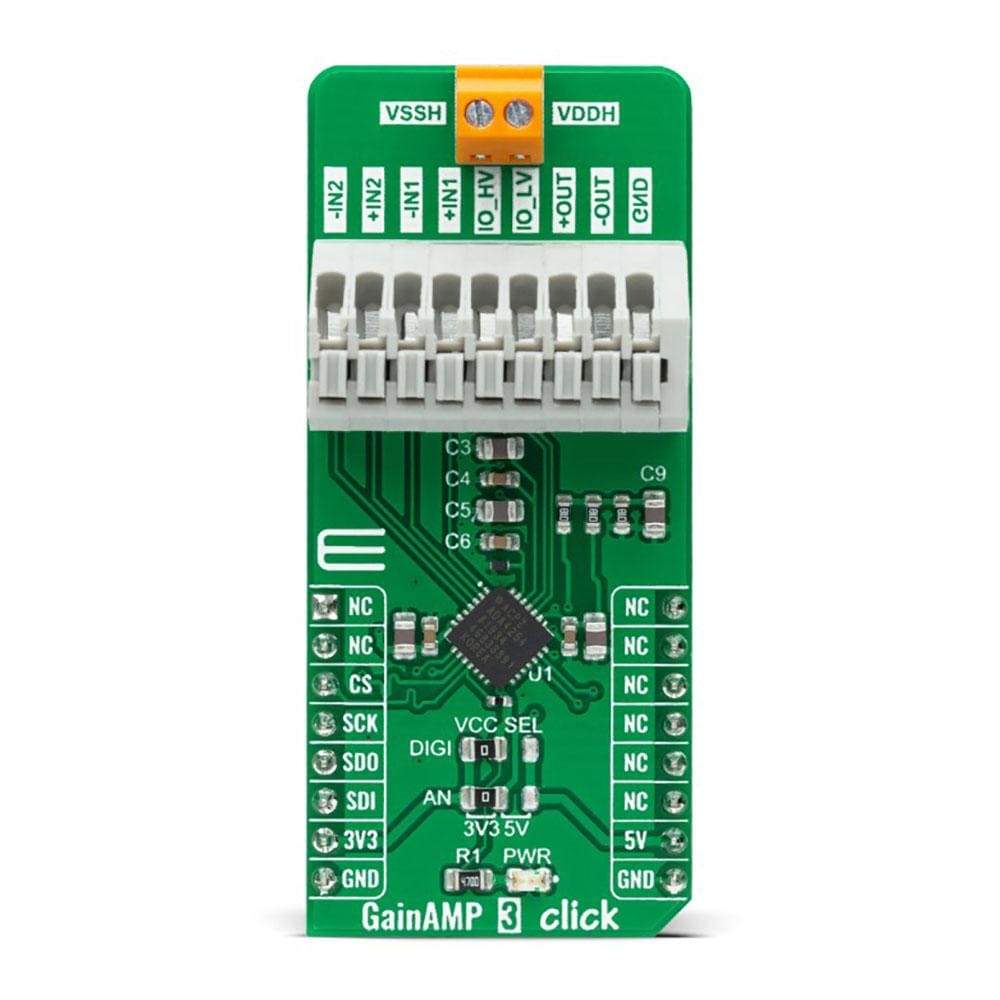
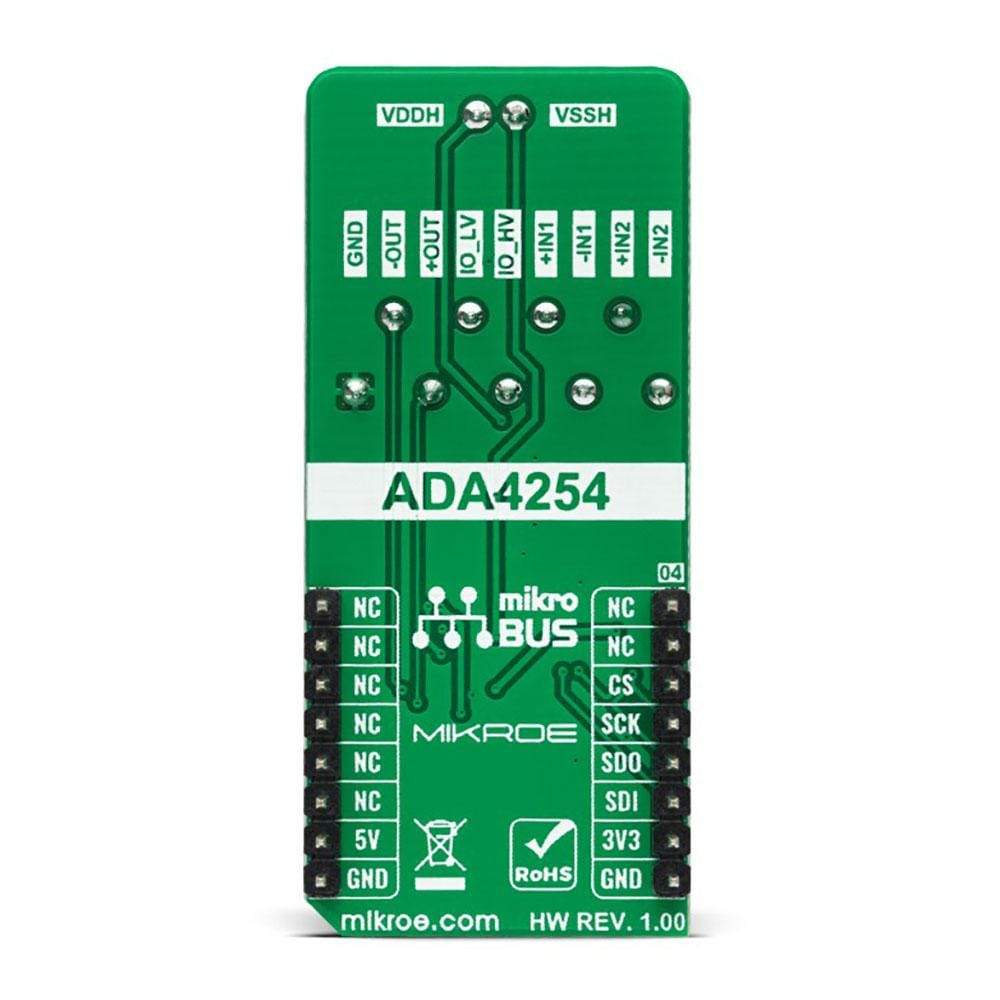
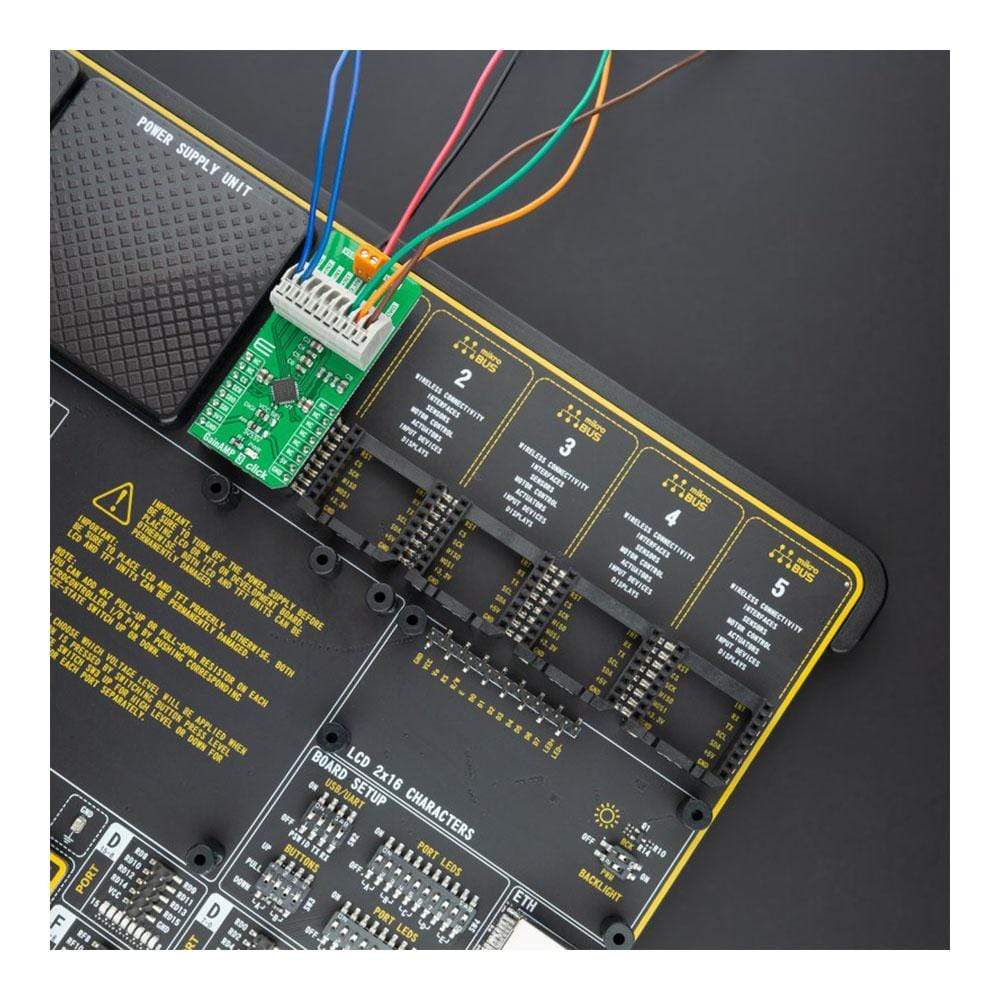
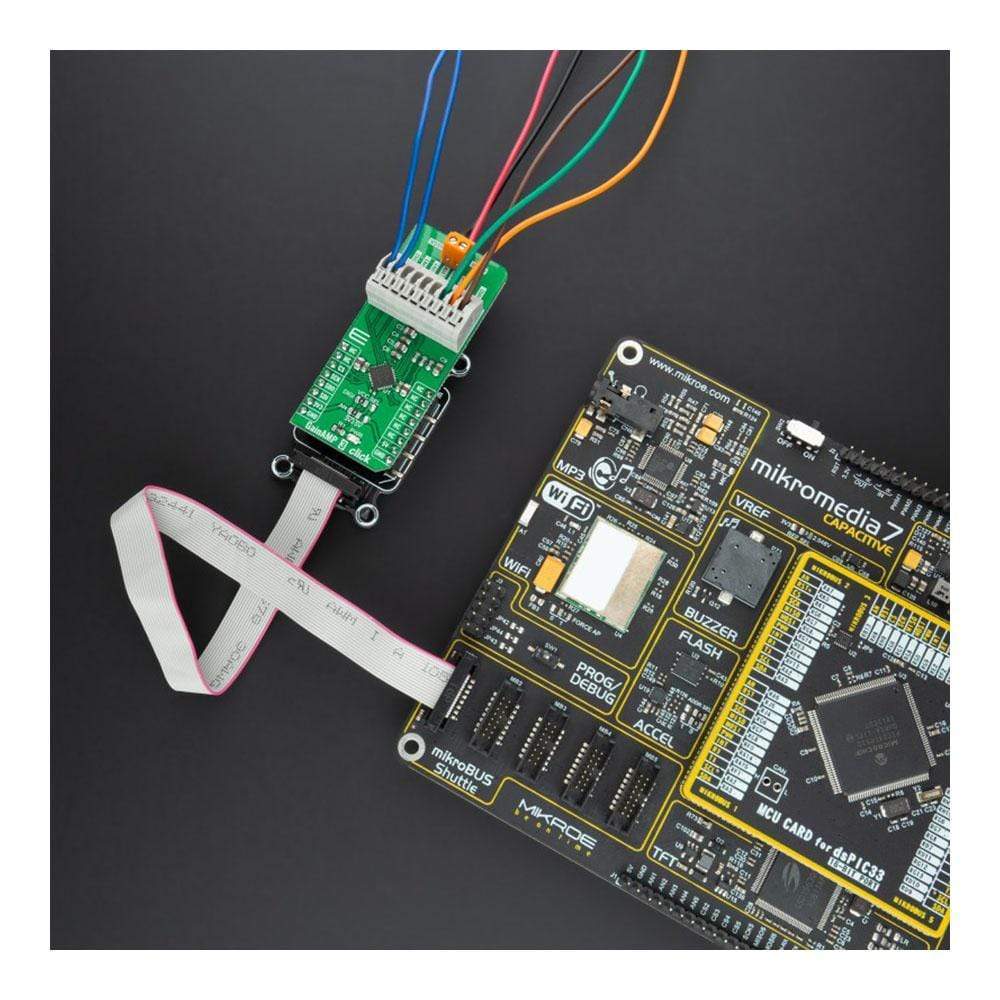
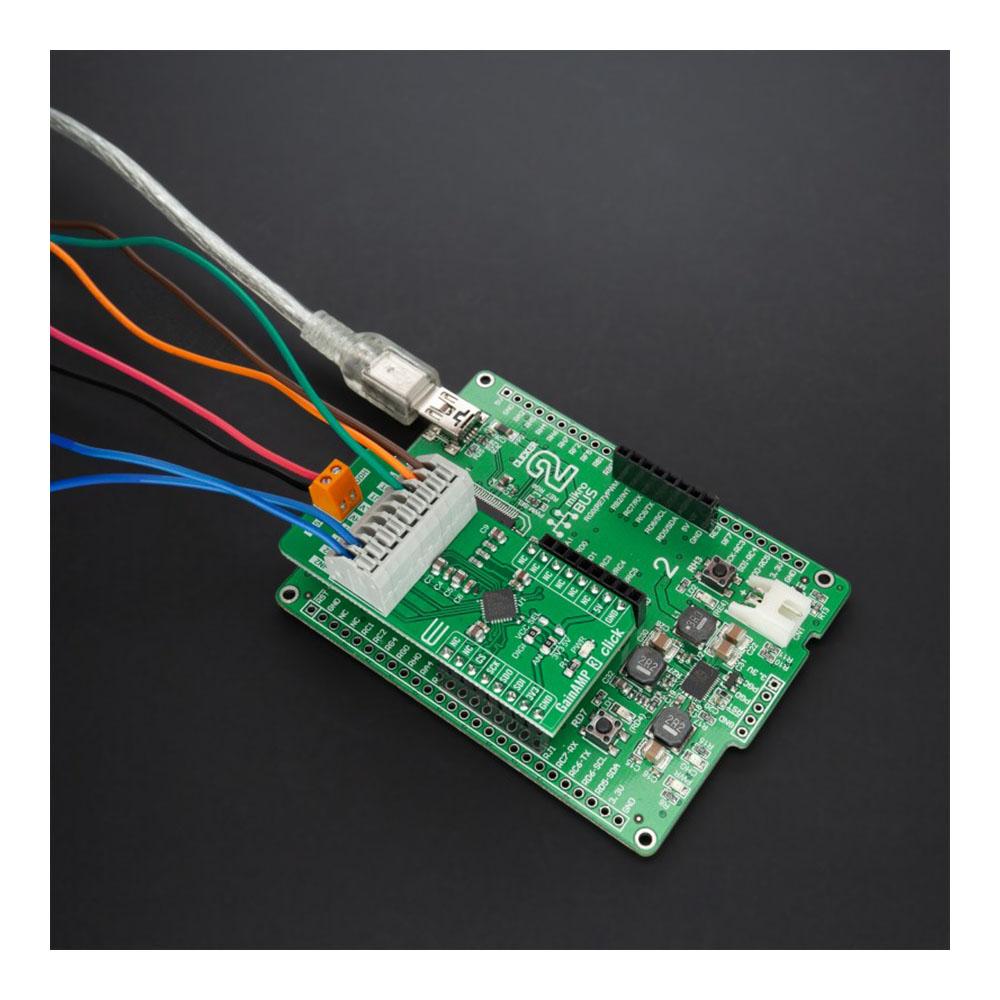
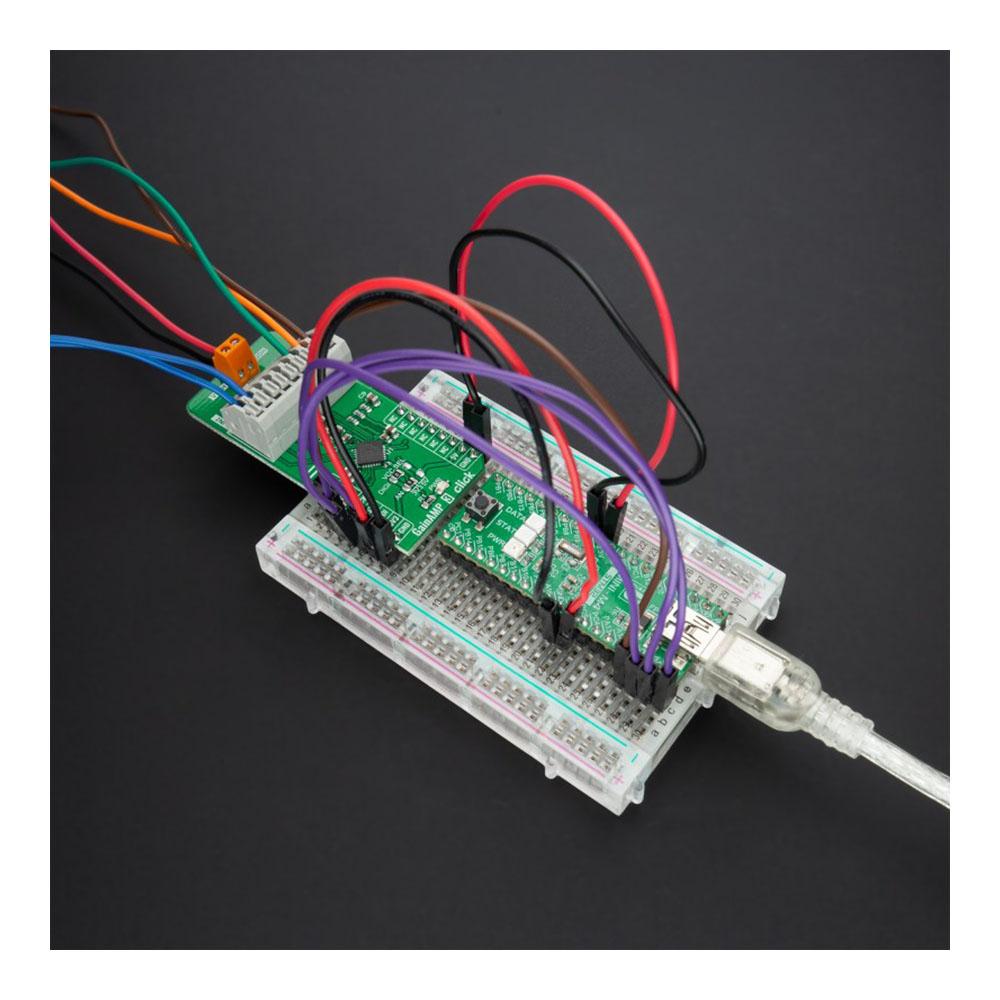
Overview
The GainAMP 3 Click Board™ is a compact add-on board that contains a 4-channel programmable gain amplifier. This board features the ADA4254, a zero drift, high voltage, programmable gain instrumentation amplifier from Analog Devices. It features 12 binary weighted gains and three scaling gain options resulting in 36 possible gain settings. It comes with an input multiplexer providing ±60V protection to the high impedance inputs of the amplifier and an excitation current source output available to bias sensors such as resistance temperature detectors (RTDs). The ADA4254 zero-drift amplifier topology self-calibrates DC errors and low-frequency noise, achieving excellent DC precision over the entire specified temperature range, maximizing dynamic range, and significantly reducing calibration requirements in many applications.
The GainAMP 3 Click Board™ represents a perfect choice for industrial systems and process control that demand precision, robustness, and low power, thanks to its low power consumption.
Downloads
Der GainAMP 3 Click Board™ ist eine kompakte Zusatzplatine, die einen 4-Kanal-Verstärker mit programmierbarer Verstärkung enthält. Diese Platine enthält den ADA4254, einen driftfreien, hochspannungsgesteuerten Instrumentenverstärker mit programmierbarer Verstärkung von Analog Devices. Er verfügt über 12 binär gewichtete Verstärkungen und drei Skalierungsverstärkungsoptionen, die 36 mögliche Verstärkungseinstellungen ergeben. Er wird mit einem Eingangsmultiplexer geliefert, der ±60-V-Schutz für die hochohmigen Eingänge des Verstärkers bietet, und einem Erregerstromquellenausgang, der für Vorspannungssensoren wie Widerstandstemperaturdetektoren (RTDs) verfügbar ist. Die driftfreie Verstärkertopologie des ADA4254 kalibriert Gleichstromfehler und niederfrequentes Rauschen selbst und erreicht so eine hervorragende Gleichstrompräzision über den gesamten angegebenen Temperaturbereich, maximiert den Dynamikbereich und reduziert die Kalibrierungsanforderungen in vielen Anwendungen erheblich.
Das GainAMP 3 Click Board™ stellt dank seines geringen Stromverbrauchs die perfekte Wahl für Industriesysteme und Prozesssteuerungen dar, bei denen Präzision, Robustheit und geringer Stromverbrauch gefragt sind.
| General Information | |
|---|---|
Part Number (SKU) |
MIKROE-4800
|
Manufacturer |
|
| Physical and Mechanical | |
Weight |
0.02 kg
|
| Other | |
Country of Origin |
|
HS Code Customs Tariff code
|
|
EAN |
8606027383946
|
Warranty |
|
Frequently Asked Questions
Have a Question?
Be the first to ask a question about this.

